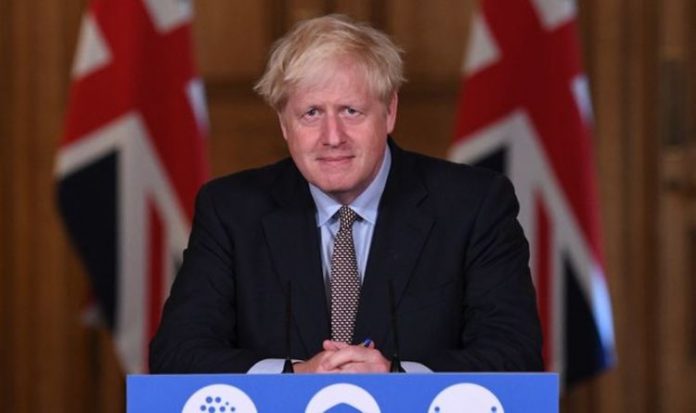The UK has been on an uncomfortable ride with coronavirus, at one point have one of the worst records in the world. No one could have predicted at the beginning of this year what would come – Express.co.uk takes a look back at where we have come from.
March 23: The UK is plunged into lockdown by Boris Johnson – meaning all UK citizens and residents were only allowed to leave their house for one hour a day for essentials or for exercise.
All non-essential retail is closed and the country is instructed to work from home.
Those currently abroad are instructed by the Foreign Secretary to return immediately
March 25: Prince Charles comes forward to say he has tested positive for COVID-19. He makes a swift recovery in the coming week.
March 26: Clap for Carers begins, kicking off the weekly thank you to the nation’s essential workers.
March 27: The Prime Minister and Health Secretary Matt Hancock reveal they have tested positive for COVID-19 and self isolate, with Dominic Raab taking the reigns from Mr Johnson.
March 28: Amged El-Hawrani becomes the first NHS worker to die of coronavirus. Hundreds more have succumbed to the virus since then.
April 2: The infamous ‘100,000’ tests a day become the goal for the end of the month, as set by the Health Secretary.
On the same day, the world passes the first million mark of people infected with COVID-19.
April 3: The first Nightingale hospital opens in London.
April 5: Queen Elizabeth II addresses the nation in a prerecorded speech
April 6: The Prime Minister goes into intensive care at St Thomas’s hospital in London, following a positive test for coronavirus.
April 12: The Prime Minister leaves hospital to recover at Chequers.
The UK death toll from hospital patients passes 10,000.
May 22: The Mirror breaks the story of Dominic Cummings doomed trip to Durham, sparking a media frenzy and fierce backlash from the public.
The international travel quarantine is finally introduced by Priti Patel.
May 23: A second witness comes forward to tell newspapers about Mr Cumming’s trip to Barnard Castle, a popular day trip destination.
May 24: The Prime Minister comes out to defend his top advisor, saying he ”acted responsibly, legally and with integrity”, and “any parent would frankly understand what he did”.
Mr Johnson also confirms there will be a phased reopening of England’s primary schools.
May 25: Dominic Cummings holds a press conference in the Rose Garden at Downing St.
He defends his actions in a press conference in the Downing Street rose garden, saying he believes he behaved “reasonably” and does not regret his actions.
May 28: NHS Test and Trace officially launches across England with 25,000 contact tracers.
June 1: Primary age children in specific year groups are the first to return to school post lockdown.
June 15: Non-essential retail is allowed to reopen following ‘COVID secure’ guidelines.
Dexamethasone, a cheap steroid, is found to reduce deaths from the virus, it is found in a new study.
June 19: The threat level is downgraded to three from four after a decrease in cases in all four UK nations.
June 23: Final daily press conference from Downing Street is held.
The Oxford vaccine is given for the first time to a healthy volunteer.
June 29: A local lockdown is imposed for the first time in Leicester.
July 3: Travel corridors officially begin.
July 4: Pubs, restaurants and bars are allowed to reopen for the first time in months for sit in customers.
Hairdressers can also trade again for the first time since lockdown began.
Wedding restrictions are also lifted, but with severe limitations still in place.
July 13: Beauty salons and tattoo parlours can now open again.
July 24: Face coverings become mandatory in shops across England.
July 30: Second wave warnings come from Matt Hancock following rising cases on the continent.
Areas of the north such as Greater Manchester, Lancashire and West Yorkshire are hit with restrictions.
August 1: Shielding advice for the clinically vulnerable is lifted for the time being.
August 13: Exam results fiasco begins, with thousands of pupils results downgraded via a ‘moderation’ algorithm. The Government U-turns on its decision to uphold grades less than a week later.
September 11: The R rate for the UK officially goes over 1 for the first time in months.
September 14: Gatherings of more than six people in England become illegal, as the Government begins to tighten on the entire country following signs of a second wave. Scotland deviates from the mainstream Government advice with tighter restrictions.
September 19: The Government warns people in England who refuse to self isolate will be fined £10,000.
September 22: Even tighter restrictions are put in place across the UK, with pubs ordered to close at 10pm and household visit rules tighened.







